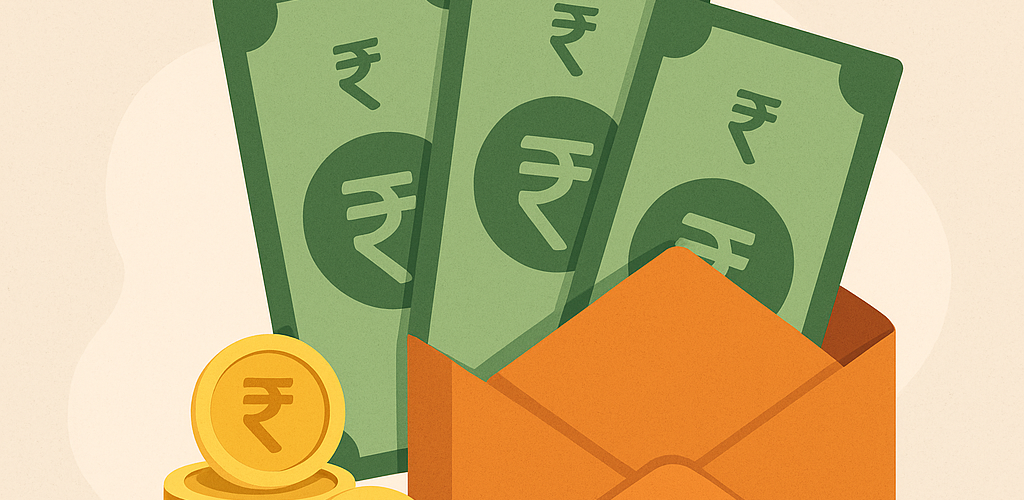Best Savings Accounts 2025: Maximize Earnings

The financial landscape in 2025 presents savers with both opportunities and challenges. The Reserve Bank of India (RBI) recently reduced the repo rate by 50 basis points to 5.5%, which led many banks to lower their deposit and savings account interest rates. Traditional banks continue offering stability but with lower yields, while newer digital and small finance banks now attract attention with higher returns. In this evolving environment, savers must carefully choose the best savings accounts that balance returns, risk, and convenience.
Understanding the Current Interest Rate Scenario
The RBI’s decision to reduce the repo rate directly affected deposit yields across the banking sector. Major private banks like HDFC Bank and ICICI Bank quickly revised their savings account rates, offering between 2.75% to 3%. Axis Bank now offers between 2.75% and 3.25% depending on account balance slabs.
While large commercial banks focus on safety and broad services, small finance banks (SFBs) and select digital banks offer much higher rates, often ranging from 6% to 7.75%, to attract new customers. Savers now actively explore these alternatives to optimize returns on their idle funds.
Top Savings Accounts for 2025
IDFC FIRST Bank (Up to 7%)
IDFC FIRST Bank structured its savings account rates with progressive slabs. For balances up to ₹5 lakh, the rate stands at 3%. Balances between ₹5 lakh and ₹10 crore earn 7%, while balances between ₹10 crore and ₹25 crore attract 6.75%. This tiered approach ensures higher returns for customers maintaining larger balances while retaining flexibility.
DBS Bank (Up to 5.5%)
DBS Bank offers attractive slab-based rates as well. Balances up to ₹2 lakh earn 2.75%, while balances between ₹2 lakh and ₹5 lakh receive 3.25%. Customers maintaining balances between ₹5 lakh and ₹50 lakh benefit from a 5.5% rate, and those with balances above ₹50 lakh receive 4%. DBS Bank also credits interest quarterly, providing customers with regular returns.
Suryoday Small Finance Bank (Up to 7.75%)
Suryoday Small Finance Bank remains a favorite for those seeking high yields. Balances up to ₹1 lakh earn 2.5%. Balances between ₹1 lakh and ₹5 lakh receive 4%. Customers holding ₹5 lakh to ₹10 lakh balances receive 7.25%. The rate increases to 7.5% for balances between ₹10 lakh and ₹2 crore and reaches 7.75% for balances between ₹2 crore and ₹5 crore.
Utkarsh Small Finance Bank (Up to 7.75%)
Utkarsh Small Finance Bank follows a similar model. Balances up to ₹1 lakh earn 4%, and balances between ₹1 lakh and ₹5 lakh attract 6.25%. Balances between ₹5 lakh and ₹50 crore earn 7.5%, while balances above ₹50 crore receive 7.75%. This structure offers substantial benefits for high-balance customers.
RBL Bank (Up to 7%)
RBL Bank offers competitive rates with 5.5% for balances between ₹1 lakh and ₹10 lakh, 6% for balances between ₹10 lakh and ₹25 lakh, and up to 7% for higher balances. RBL Bank combines attractive returns with accessible services across physical branches and digital platforms.
Traditional Banks: Safe but Lower Yield
State Bank of India (2.7%–3%)
SBI offers 2.7% on balances up to ₹10 crore and 3% for higher balances. Although rates remain lower, customers choose SBI for its extensive branch network, government backing, and strong digital services.
HDFC Bank (2.75%–3.5%)
HDFC Bank applies 2.75% across most balances after recent rate adjustments. Previously, higher balances earned 3.5%, but recent reductions brought uniformity. HDFC Bank compensates for lower rates with excellent customer service, advanced online banking, and a wide network.
ICICI Bank (2.75%)
ICICI Bank maintains a flat 2.75% interest across all balance tiers. The bank offers a comprehensive suite of financial services, including integrated trading accounts, credit cards, personal loans, and investment products.
Axis Bank (2.75%–3.25%)
Axis Bank offers between 2.75% and 3.25% depending on balance tiers. While returns remain modest, the bank continues to provide reliable customer support, efficient mobile banking, and diverse financial products.
Specialized Savings Accounts for NRIs and Families
HSBC NRE Account (3.5%–7%)
HSBC’s Non-Resident External (NRE) account offers competitive rates between 3.5% and 7% while providing tax-free interest for NRIs in India. These accounts allow NRIs to maintain savings in Indian rupees with full repatriability.
Sukanya Samriddhi Yojana (8.2%)
The government-backed Sukanya Samriddhi Yojana (SSY) serves as an excellent option for parents saving for their daughters. The account currently offers 8.2% interest, far exceeding regular savings accounts. Although SSY requires a 15-year lock-in, it offers tax benefits under Section 80C and tax-free interest earnings.
Alternative Savings Options Beyond Banks
RBI floating-rate savings bonds offer another attractive savings option, delivering returns of approximately 8.05% for a fixed tenure of seven years. These government-backed bonds adjust rates every six months, tracking the prevailing national savings certificate (NSC) rate. PPF (Public Provident Fund) accounts yield 7.1% while providing tax advantages and long-term security. National Pension System (NPS) accounts also offer retirement planning benefits and moderate returns.
Balancing Yield and Security
Public sector banks like SBI, Canara Bank, and Bank of Baroda excel in safety but offer low yields. On the other hand, small finance banks provide attractive returns but carry higher risk profiles. While deposit insurance under DICGC covers up to ₹5 lakh, larger balances in these banks involve risk if the institution faces financial distress.
Savers must evaluate their own risk appetite before choosing between higher-yield accounts and traditional safety. Many individuals prefer to diversify their savings between established large banks and smaller high-yield accounts to strike a balance.
Recommended Strategies to Maximize Returns
- Split Balances Wisely: Keep up to ₹5 lakh in highly secure public sector banks for guaranteed safety. Allocate surplus funds into high-yield SFB accounts to capture better rates.
- Use Multiple Accounts: Combine the strengths of mainstream stability (SBI, HDFC, ICICI) with the superior yields from IDFC FIRST, RBL, or Suryoday.
- Monitor Rate Changes: Stay informed on RBI policies and bank announcements. Many banks adjust savings rates within days of monetary policy shifts.
- Stay Tax Efficient: Remember that interest from savings accounts remains fully taxable under regular income. Consider tax-saving instruments like SSY and PPF alongside traditional savings.
- Leverage Digital Banking: Take advantage of online services offered by DBS, Kotak 811, and other fully digital platforms for zero-balance maintenance, easy fund transfers, and superior accessibility.
Outlook for Savings Account Interest Rates in 2025
Experts expect more shifts in interest rates depending on RBI’s next moves. If inflation remains controlled and global growth slows, further repo rate cuts may occur, forcing banks to reduce deposit rates even more. While major private and public sector banks might continue offering sub-3% rates, small finance banks could sustain higher rates to attract depositors. Government savings schemes like Sukanya Samriddhi, PPF, and RBI floating-rate bonds will likely remain attractive for risk-averse savers.
Conclusion: Select Smartly to Build Financial Strength
In 2025, savers hold access to a wide variety of savings account options tailored for different needs. Some individuals will prioritize safety and stick with established giants like SBI, HDFC, and ICICI. Others will capitalize on higher returns offered by Suryoday, Utkarsh, IDFC FIRST, and RBL Bank. NRIs will continue benefiting from accounts like HSBC’s NRE products, while parents may choose long-term, high-yield accounts such as Sukanya Samriddhi Yojana.
Smart savers carefully balance risk, return, and liquidity by dividing funds across multiple accounts, regularly reviewing rates, and staying informed on policy changes. This multi-pronged approach ensures consistent growth, optimized interest, and financial security even in fluctuating markets.













